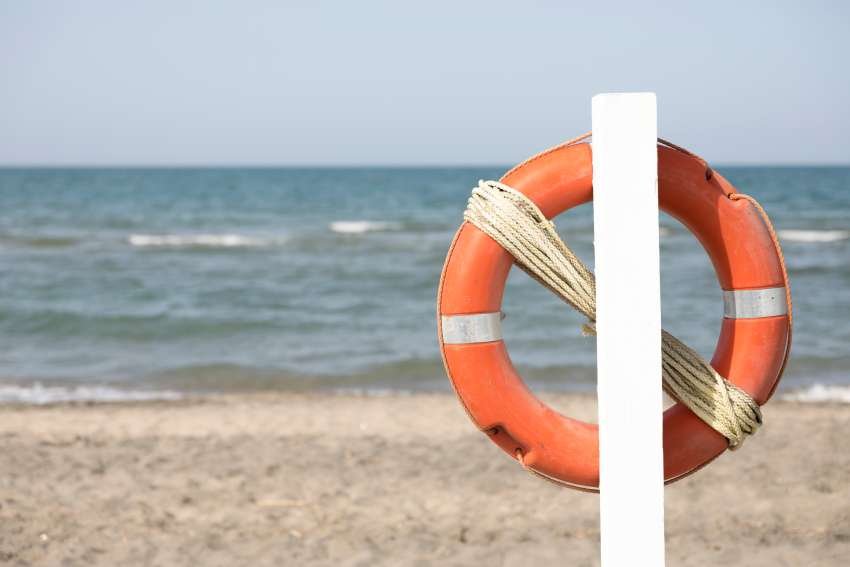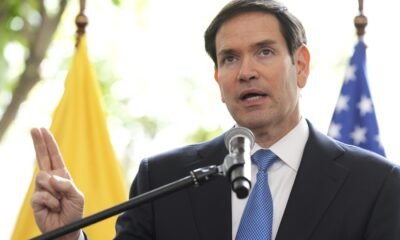Travel Guides & Articles
All New Updates From Beach Boulevard, Florida: Two Major Crashes in Twenty Four Hours Raises Tourist Safety Concerns During Peak Travel Season

Monday, July 7, 2025
With the holiday traveling season set to come into full swing in Florida, Beach Boulevard in the Jacksonville area has in the past 24 hours become the site of rising panic after the incident of two huge crashes, which claimed the life of one individual and injured some others. Those crashes illustrate the rising need for highway safety and traffic administration in congested tourist routes. Since ever-increasing tourists are passing through Florida’s beaches and attractions, road safety for tourists and locals alike has now become as critical as ever before.
The initial crash happened in the evening of Saturday, July 5, when a horrific eight-vehicle chain reaction crash happened at the corner of St. John’s Bluff Road and Beach Boulevard. As witnessed, the incident was triggered when one gray pickup truck crashed into a white Honda, triggering a disastrous sequence of events. The pickup truck drove away from the scene, leaving in its wake numerous vehicles and injured persons.
Witness Wendy Woo, who was there, told about the terror of the incident, stating, “When I saw the cars I was like everybody is dead. That was my thought. I can’t. Nobody survived this right here.” Luckily, all did not die as a result of the crash, although numerous passengers had very serious injuries. The driver of the white Honda was slammed into a Mercedes, which was driven by two men. Even though the brutality of the crash was intense, numerous individuals in the crash were astonishingly walking about outside the wreckage when it had all taken place.
Another severe crash was reported the next day on Beach Boulevard, which increased fears regarding safety in the region. With holiday road trips increasing and more tourists flooding the area, events like this are calling attention to dangers that may be brought about by crowded tourist attractions and the infastructure in the region, which may lack the capacity to support the growing number of tourists.
Impact on Tourism: A Wake-up Call for Florida’s Travel Industry
The impact of these crashes extends far beyond the individuals involved and their families; it also raises important questions about the safety of tourism-related areas and the potential risks that tourists face while traveling. Florida is one of the most visited states in the U.S., attracting millions of domestic and international travelers each year who come to experience its beaches, theme parks, and diverse attractions. Cities like Jacksonville, with their vibrant tourism sectors, rely heavily on the influx of visitors to drive the local economy.
However, incidents such as these present a significant challenge to the state’s tourism industry. As tourism continues to grow, especially during the peak travel months, the safety of roads and transport infrastructure becomes a critical issue. Tourists are often unfamiliar with local roadways, making them more vulnerable to accidents, particularly in areas where traffic is dense and the roads are not adequately equipped to handle such high volumes of vehicles.
In the aftermath of these crashes, the tourism industry faces a public relations challenge. While Florida remains a top destination for travelers, incidents like these can create a perception of danger among potential visitors. For tourists planning their vacations, the thought of navigating unfamiliar roads and facing potential hazards on their way to popular attractions may cause some to reconsider their travel plans. Negative media coverage of accidents can deter tourists from booking trips to the region, fearing that their safety could be compromised.
For local businesses and tourism operators, the impact is equally concerning. While the majority of tourists may continue to visit, accidents and safety concerns can affect bookings, with travelers opting for other destinations that are perceived as safer. Florida’s tourism industry, which generates billions of dollars annually, is deeply intertwined with the reputation of the state as a safe and enjoyable place for families and international visitors.
Road Safety in Tourist Areas: A Growing Need for Reform
The frequency of traffic accidents in tourist-heavy areas such as Beach Boulevard highlights the need for comprehensive reforms to improve road safety. As traffic congestion increases due to the rise in tourism, there are growing concerns about whether the infrastructure in popular tourist destinations is adequately prepared for the influx of vehicles.
Local authorities and the Florida Department of Transportation (FDOT) must take swift action to address the safety concerns raised by these incidents. Measures such as improved signage, better traffic management systems, and enhanced pedestrian safety protocols are critical to preventing further accidents. Additionally, there is a need for increased law enforcement presence in high-traffic areas, particularly during peak travel times, to discourage reckless driving behaviors such as speeding and hit-and-run incidents.
Moreover, public awareness campaigns highlighting road safety could play a pivotal role in educating both locals and tourists about the risks of distracted driving, speeding, and the importance of following traffic laws. For tourists unfamiliar with local road conditions, providing clear directions and warnings about dangerous intersections could help prevent accidents.
In the longer term, Florida may also need to consider infrastructure upgrades in high-traffic tourist areas. Expanding and modernizing roads, improving signage, and enhancing pedestrian facilities can all contribute to making travel safer for both residents and visitors. In addition, initiatives like roundabouts, more clearly marked crosswalks, and the installation of traffic cameras could improve safety by reducing the likelihood of high-speed collisions and other types of accidents.
Tourism and Transportation: A Delicate Balance
While tourism is undoubtedly a major driver of Florida’s economy, there must be a delicate balance between welcoming visitors and maintaining public safety. The recent incidents on Beach Boulevard should serve as a reminder to policymakers and the tourism industry that ensuring the safety of roads, particularly in areas with heavy foot traffic and a high number of vehicles, must remain a top priority.
Tourists visiting Florida expect more than just sunny beaches and world-class attractions—they also expect to feel safe and secure during their travels. The state’s tourism sector has long been seen as a model for success, but incidents like these serve as a stark reminder that infrastructure and safety standards must evolve alongside growing demand.
Moving Forward: A Call for Action
In the wake of the recent accidents, both local authorities and the tourism sector must work together to create a safer environment for tourists. For tourists, understanding the risks associated with unfamiliar roadways and taking necessary precautions can help mitigate potential dangers. However, it is equally important for the state of Florida to prioritize the development of infrastructure that can support the growing number of visitors without compromising their safety.
Tourists should be reassured that safety improvements are being made and that their concerns are being addressed. From enhanced traffic management systems to stricter enforcement of road safety laws, every effort must be made to create a secure environment for both residents and visitors. By improving road safety, Florida can continue to thrive as a premier tourist destination without the looming threat of preventable accidents.
Conclusion: Preserving Florida’s Reputation as a Premier Travel Destination
The most recent Beach Boulevard accidents are reminders about how hard it is to be safe in crowded areas filled with tourists but also present opportunities for improvement. Florida’s tourism economy is built upon its warm atmosphere and broad selection of attractions, but it is as important or more so that tourists stay road-safe as do attractions they come for.
With the state drawing millions of tourists annually, it needs to take proactive steps towards ensuring public safety. Prioritization of road safety and investment in upgrading the infrastructure can ensure that Florida remains one of the best places to go and provide all individuals visiting it with a safe environment.
References:
Florida Department of Transportation, Jacksonville Tourism Bureau, National Highway Traffic Safety Administration, Florida Highway Patrol, Federal Highway Administration
Tags: Beach Boulevard, Beach Boulevard accidents, Beach Boulevard crashes, Beach Boulevard traffic safety, florida, Florida holiday accidents, Florida tourism safety, holiday travel incidents, impact on tourism, Jacksonville, road safety Florida, St. John’s Bluff Road, tourism-related traffic accidents, travel destination safety, United States
Travel Guides & Articles
Booking.com Reveals How Millennials and Gen Z are Reshaping India’s Travel Landscape

INDIA, 10th September 2025: Travel today is no longer just about reaching a destination. It’s about creating shared memories, strengthening bonds and investing in experiences that truly matter. With Indian travellers increasingly prioritising meaningful moments, mindful indulgence and shared adventures, one of the world’s leading online travel platforms, Booking.com reveals insights into the evolving psyche of Millennial and Gen Z travellers, who are seeking deeper connections and mindful indulgence more than ever before.
“Today’s Indian traveller is driven by a desire for meaningful connection. This is a behavioural shift that’s redefining what a journey is, whether it’s for the 68% of Gen Z planning solo trips to recharge or the 92% of Gen Z parents covering vacation costs for their families. They are balancing the thrill of discovery with the comfort of companionship. Travel is more than just about reaching a destination; it’s about investing in memories with your loved ones, something that is reflected across all generations. Booking.com is committed to empowering every traveller to find their perfect, personalised journey.” said Santosh Kumar, Regional Manager, South Asia at Booking.com.
Family, Friends & Beyond: The New Travel Companions
Indian travellers are reshaping the way they journey together, with millennials strengthening family bonds and Gen Z widening the circle to include parents, partners and friends.
Family first: 62% of Indian millennials prefer travelling with their immediate family (spouse/children), higher than the APAC average of 53%.
Paying it forward: A majority of travellers are willing to cover trip costs for their loved ones. 89% of millennials and 88% of Gen Z are willing to pay for a partner’s, parent’s trip or their children’ trip.
Friendship journeys: The circle is widening with 83% of Gen Z are willing to pay for friends’ holidays, compared to 75% of millennials and 58% of Gen X.
Responsible travellers: 92% of Gen Z parents have paid for vacations (fully/partly) for their family, ahead of millennials (84%), Gen X (71%) and Baby Boomers (66%).
These insights highlight how modern travel is deeply rooted in connection, care and shared experiences
Smart Splurges: Balancing Indulgence with Mindfulness
While Indian travellers across generations are showing a rising appetite for travel spend compared to their APAC counterparts – yet they remain sharply mindful of value and budgeting.
Spending surge: 42% of millennials and 89% of Gen Z in India plan to spend more on travel this year, above the 24% APAC average.
Gen X steps up: 35% of Indian Gen X expect to increase travel spend—more than double the 15% APAC average.
Splurge for memories: 65% of millennials and 57% of Gen Z admit they’d “lavishly blow their budget” for a truly unforgettable holiday.
Mindful choices: 82% of Gen Z and 88% of millennials say travel is a priority, but they are careful to find the best options within their budget.
Pocket-sized adventures: Both millennials (77%) and Gen Z (70%) believe taking multiple short trips is a smarter use of budget than one long holiday, reflecting a desire for more frequent getaways.
Curiosity Meets Comfort: Adventure with Assurance
Indian travellers are blending the desire for adventure with the need for safety and familiarity—seeking experiences that balance wellness, culture, and safety.
Solo escapes: 68% of Gen Z and 65% of millennials plan solo trips to relax and recharge.
Motivations differ: Gen Z are motivated by adventure (46%) and food (45%), while millennials lead towards cuisine (50%), cultural immersion (48%) and adventure (48%).
Safety first: A top priority for both millennials (72%) and Gen Z (66%) when choosing a destination, followed by value for money (millennials 66%, Gen Z 61%) and good weather (millennials 64%, Gen Z 61%).
Familiar comfort: The appeal of a trusted destination is strong, with nearly 70% of both generations planning to revisit a place they already know.
Indians across generations are making travel a mindful priority, seeking value through multiple shorter escapes and unforgettable experiences. Balancing new adventures with the reassurance of safety, culture and familiarity, they see journeys not just as trips but as investments in connection and meaningful discovery.
Travel Guides & Articles
Nepal Gen Z protests lead to travel chaos, Bengal’s Durga Puja takes heavy hit

The wave of student and youth protests in Nepal has snowballed into a major crisis, crippling normal life in Kathmandu and spilling across the border to India’s tourism sector.
The agitation began as a campaign against corruption but escalated sharply after the government imposed a social media ban, triggering violent clashes in the capital.
Police opened fire on demonstrators, leaving at least 19 dead, which further fuelled public anger. Under mounting pressure, the Nepalese government was forced to lift the ban and issue a late-night statement appealing for calm.
The unrest has cast a shadow over India’s Durga Puja holiday season, particularly in West Bengal, where Nepal is a popular tourist destination. Travel operators reported mass cancellations within hours of the violence breaking out.
“Over a hundred bookings were cancelled as soon as news of the unrest spread,” said Samrat Sanyal, General Secretary of the Himalayan Hospitality and Tourism Development Network (HHTDN). He added that cross-border traders, too, face mounting financial losses.
At border checkposts, drivers waiting for passengers have been left stranded after the Sashastra Seema Bal (SSB) issued a high alert, halting all vehicle crossings. Some locals have even expressed intent to join the protests, with one resident declaring, “The Gorkhas are not afraid.”
For many holidaymakers, the situation has thrown plans into disarray. Suman Ghosh, a banker from Kolkata, said he had already booked air tickets and hotels for his family but was now considering cancelling the trip.
“The prevailing situation is not safe for my family. I don’t know whether I will get my refund. My travel agent hasn’t responded,” he said.
Industry voices warn of deep losses during what is usually a peak travel period. Anil Punjabi, a member of the National Committee of the Travel Agents Federation of India, called the developments “disastrous for the tourism industry”, noting that tourism is “the first to be hit and the last to cure”.
He said Bengal typically sends 12,000 to 15,000 tourists to Nepal every Puja season, each spending around Rs 30,000 to Rs 35,000, but this year most are now seeking refunds or scrambling for alternatives.
The mood across the travel sector remains bleak, with operators ruling out recovery during the festive season. West Bengal Chief Minister Mamata Banerjee has voiced concern over the turmoil in Nepal and its impact on border districts, while stating that the Centre has yet to reach out to her government.
She urged residents to maintain peace along the border as uncertainty lingers over the neighbouring country.
– Ends
Travel Guides & Articles
Pilgrimage tourism boom: MakeMy report shows 19% growth in FY24-25; surge in premium stays

MUMBAI: Group travel, short stays and last-minute bookings, these are the trends that define the popular religious tourism segment with pilgrimage travel emerging as one of the fast-growing segments of India’s travel and tourism industry. “Accommodation bookings across 56 pilgrimage destinations grew by 19% in FY24-25,” according to online travel company MakeMyTrip (MMT) which tracked for pilgrimage travel in 2024-2025. “The pilgrimage travel trends highlight broad-based momentum, with 34 destinations recording double-digit growth and 15 destinations growing by over 25%, underscoring how spiritual journeys are becoming a powerful driver of travel demand,” the MMT report said.The breadth of growth across pilgrimage destinations can be seen in centres such as Prayagraj (Uttar Pradesh), Varanasi (Uttar Pradesh), Ayodhya (Uttar Pradesh), Puri (Odisha), Amritsar (Punjab) and Tirupati (Andhra Pradesh), which continue to grow. At the same time, places like Khatushyam Ji (Rajasthan), Omkareshwar (Madhya Pradesh) and Thiruchendur (Tamil Nadu) are also registering strong momentum, reflecting the widening canvas of spiritual travel in the country.“The strong growth in pilgrimage demand is also driving an aggressive expansion of accommodation supply across key destinations. Travellers are largely opting for short, purpose-driven stays, with more than half choosing single-night trips. At the same time, premiumisation is gaining momentum, bookings for rooms priced above ₹7,000 grew by over 20%” it saidRajesh Magow, Co-Founder and Group CEO, MakeMyTrip, said, “Pilgrimage Travel has always been part of our culture, but what we see now is its scale and consistency across the country. We are seeing steady growth, fuelled by stronger connectivity and Indians across all age groups and income segments planning pilgrimage-led trips. This growing demand is broadening traveller expectations and prompting the industry to innovate in ways that better serve the unique needs of the pilgrim traveller.”
Nearly 2 in 3 pilgrimage bookings made within a week of travel:
The late booking trend is characteristic of Indian travellers, cutting across all segments of travel. Pilgrimage travel, much like leisure, continues to be booked very close to the date of travel, with more than 63% of bookings made within six days of departure.
Pilgrimage travel characterized by short, purpose-led stays:
Pilgrimage travel remains defined by short, purpose-driven stays. More than half of all travellers (53%) opt for single-night visits, compared to 45% in leisure travel. Two-night stays make up nearly one-third (31%) of trips, while three-night stays account for just 11%. Longer durations of four nights or more together contribute less than 5% of bookings, in contrast to leisure travel, which shows a more even spread across multiple nights.
Group travel distinctly stronger in pilgrimage:
Group bookings form a much larger share of pilgrimage travel, with 47% of trips made in groups compared to 38.9% in leisure destinations. This underlines the collective character of pilgrimage journeys, where families, friends, and community groups often travel together, further reinforcing pilgrimage as a deeply shared experience.
High-value bookings in pilgrimage cities outpace leisure destinations:
While most pilgrimage accommodation bookings (71%) are for rooms priced below ₹4,500 per night, premiumisation is gaining clear momentum. In FY24-25, bookings for rooms in the ₹7,000–10,000 range grew by 24%, while those above ₹10,000 grew by 23%. In parallel, alternate accommodation options such as homestays and apartments have also gained traction, contributing nearly 10% of room night bookings in pilgrimage destinations.
Pilgrimage Travel Spurs Wave of New Hotels and Homestays:
Over the past three years, pilgrimage destinations have seen a sharp rise in accommodation supply. More than a third of all hotel rooms available today at these locations were launched during the past three years, with even faster growth in homestays, apartments, and hostels. The expansion of homestays reflects both new additions and existing properties coming online as hosts tap into rising demand. Premium supply has also scaled rapidly, 63% of the premium accommodation available today were launched during the same period, reflecting how businesses are actively investing to capture the demand in premium segment.
Travellers increasingly combine pilgrimage with leisure experiences:
In FY 2024-25, over half (52%) of all holiday package bookings on MakeMyTrip were made by travellers seeking pilgrimage-led destinations only. At the same time, nearly 48% of bookings were from travellers who sought a combination of pilgrimage as well as leisure destinations within the same holiday package. Taken together, these trends point to a shift, with increasing number of travellers blending spiritual journeys and leisure pursuits to create a more wholesome experience.
-

 Business2 weeks ago
Business2 weeks agoThe Guardian view on Trump and the Fed: independence is no substitute for accountability | Editorial
-
Tools & Platforms4 weeks ago
Building Trust in Military AI Starts with Opening the Black Box – War on the Rocks
-

 Ethics & Policy1 month ago
Ethics & Policy1 month agoSDAIA Supports Saudi Arabia’s Leadership in Shaping Global AI Ethics, Policy, and Research – وكالة الأنباء السعودية
-

 Events & Conferences4 months ago
Events & Conferences4 months agoJourney to 1000 models: Scaling Instagram’s recommendation system
-

 Jobs & Careers2 months ago
Jobs & Careers2 months agoMumbai-based Perplexity Alternative Has 60k+ Users Without Funding
-

 Education2 months ago
Education2 months agoVEX Robotics launches AI-powered classroom robotics system
-

 Podcasts & Talks2 months ago
Podcasts & Talks2 months agoHappy 4th of July! 🎆 Made with Veo 3 in Gemini
-

 Education2 months ago
Education2 months agoMacron says UK and France have duty to tackle illegal migration ‘with humanity, solidarity and firmness’ – UK politics live | Politics
-

 Funding & Business2 months ago
Funding & Business2 months agoKayak and Expedia race to build AI travel agents that turn social posts into itineraries
-

 Podcasts & Talks2 months ago
Podcasts & Talks2 months agoOpenAI 🤝 @teamganassi





















